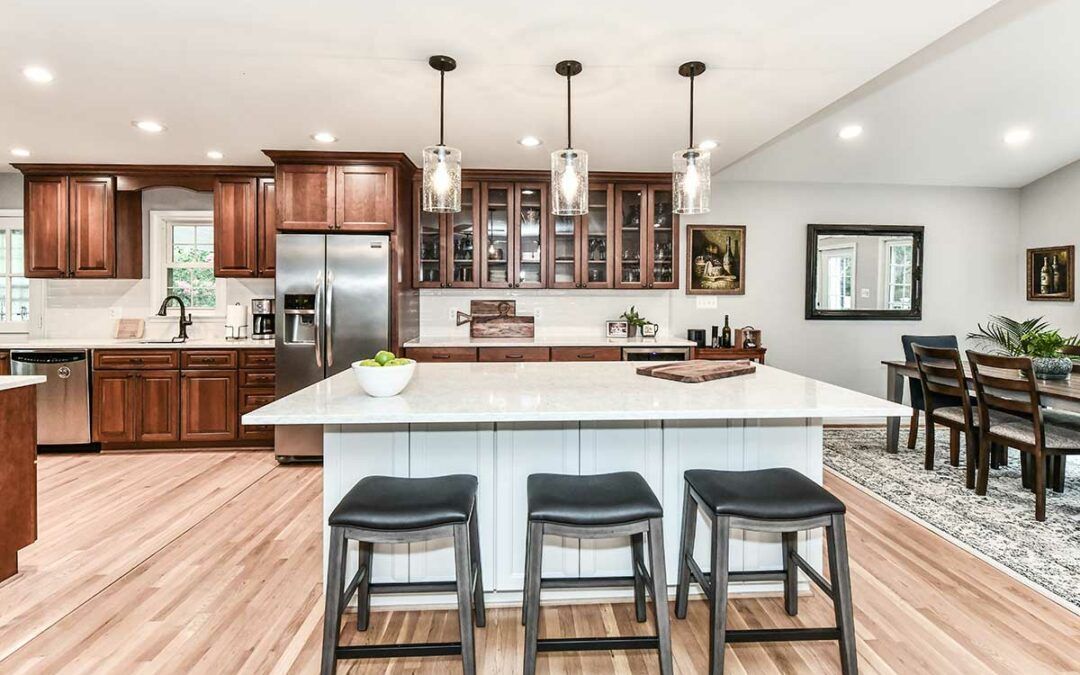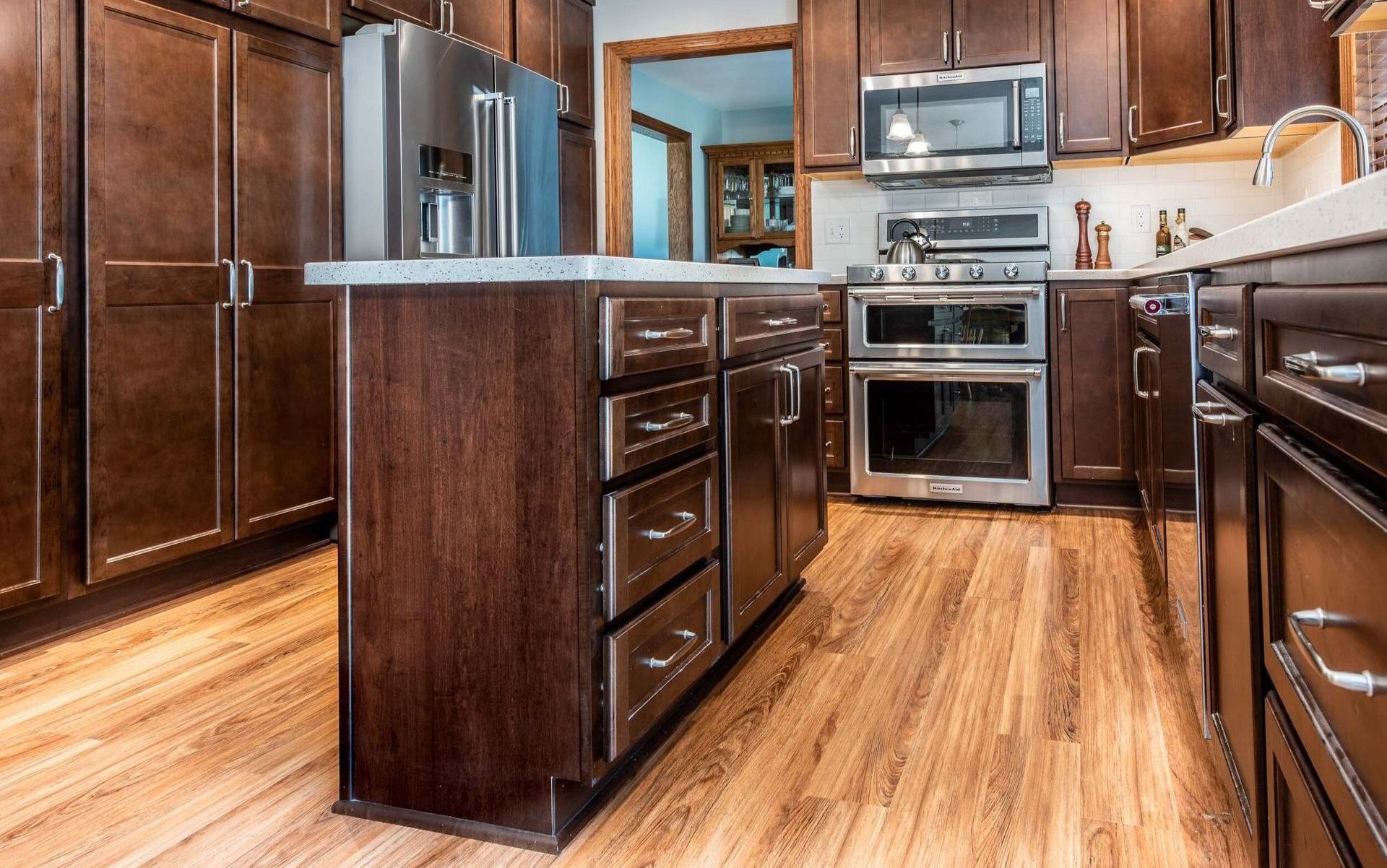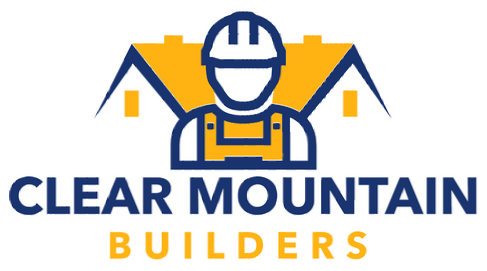Choosing the Right Flooring for Your Kitchen Remodel
Flooring Options For Your Kitchen Floor Remodel and Their Benefits
When remodeling a kitchen, one of the most important decisions homeowners face is selecting the right flooring. The kitchen is a high-traffic area prone to spills, heat, and moisture, making flooring choice essential for both functionality and aesthetics. With a wide range of flooring materials available, each with its own benefits and drawbacks, it is important to consider durability, maintenance, cost, and style before making a decision. The most popular kitchen flooring options include hardwood, tile, vinyl, laminate, and concrete.
Hardwood flooring is a classic and elegant choice for kitchens, providing a warm, natural appearance that enhances the overall aesthetic of the space. It is available in both solid and engineered varieties, allowing homeowners to choose different stains and finishes that best match their style. A major advantage of hardwood is its durability—when properly maintained, it can last for decades. Additionally, unlike many other flooring options, hardwood can be
Speak With A Remodeling Expert!
Contact Us
We will get back to you as soon as possible.
Please try again later.
refinished multiple times, allowing homeowners to restore its original beauty if it becomes scratched or worn.
Tile flooring is another popular choice for kitchens due to its durability and resistance to water and stains. Available in ceramic, porcelain, and natural stone varieties, tile offers a vast range of colors, textures, and patterns, allowing homeowners to customize their space to their liking. One of the biggest advantages of tile is its longevity; it can withstand heavy foot traffic and, when properly installed, can last for decades. Additionally, it requires minimal maintenance, as regular sweeping and mopping are enough to keep it clean.
For homeowners looking for an affordable and versatile flooring option, vinyl is an excellent choice. Available in sheets, tiles, and planks, vinyl flooring has improved significantly in recent years, with modern designs that mimic the appearance of wood, tile, or stone. One of its greatest advantages is its water resistance, making it ideal for kitchens where spills are inevitable. It is also softer underfoot than tile or hardwood, providing a more comfortable surface for those who spend a lot of time standing while cooking.
Laminate flooring is another budget-friendly alternative that replicates the look of hardwood or tile while offering increased resistance to wear and tear. It is composed of a high-density fiberboard core with a photographic layer and a protective coating, making it scratch-resistant and relatively low maintenance. Additionally, laminate is easy to install, with click-and-lock systems that allow for DIY installation, reducing overall remodeling costs.
A more modern and industrial flooring option that has gained popularity in kitchen remodels is concrete. Known for its extreme durability, concrete can withstand heavy use and last a lifetime when properly maintained. Additionally, concrete is highly customizable—it can be stained, polished, or textured to achieve a unique look that fits various design aesthetics.
Exploring the Cons of Kitchen Floor Types
Hardwood does have its downsides, particularly when it comes to moisture. It is highly susceptible to water damage, which can cause warping or swelling over time, making it less ideal for kitchens where spills are common. Additionally, hardwood is one of the more expensive flooring choices and requires regular maintenance, such as sealing and refinishing, to keep it looking its best.
Despite its benefits, tile does have some drawbacks. Tile’s hard surface can be uncomfortable to stand on for long periods, which may be a concern for those who spend a lot of time cooking. Additionally, certain types of tile can be quite slippery when wet, increasing the risk of falls. Installation can also be challenging, requiring professional expertise to ensure proper grouting and alignment. Porcelain tiles are a particularly good choice for kitchens, as they are denser and more durable than standard ceramic tiles, while natural stone tiles, though beautiful, require sealing to prevent staining. Vinyl, however, is not as durable as some other options. Over time, it can scratch or dent, particularly in high-traffic areas. Additionally, it does not add as much resale value to a home compared to hardwood or tile. Some types of vinyl may also fade when exposed to prolonged sunlight. That being said, luxury vinyl plank (LVP) and luxury vinyl tile (LVT) offer enhanced durability and a more realistic appearance, making them appealing options for homeowners seeking a balance between cost, style, and practicality.
Despite its affordability and durability, laminate has some notable disadvantages. It is not fully waterproof, meaning spills need to be cleaned up quickly to prevent damage. Unlike hardwood, laminate cannot be refinished, so if it becomes damaged, the affected section must be replaced entirely. Some homeowners also feel that laminate lacks the authenticity of real wood or tile, as it does not have the same texture or depth. Concrete shares some of the same drawbacks as tile. Its hard and cold surface can be uncomfortable, making it less ideal for those who spend long hours in the kitchen. While area rugs can help alleviate this issue, some homeowners may prefer a softer material. Additionally, concrete has the potential to crack over time due to expansion and contraction. Professional installation is also required, which can add to the overall cost of a kitchen remodel. By carefully weighing the pros and cons of each option, homeowners can select flooring that enhances their kitchen’s overall look while ensuring long-term durability and ease of maintenance.


All Rights Reserved | Miles Ahead Marketing
All Rights Reserved

